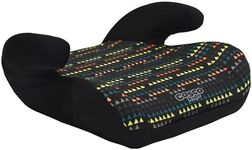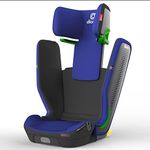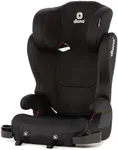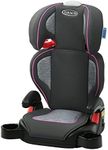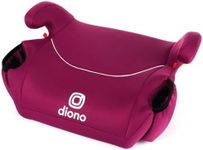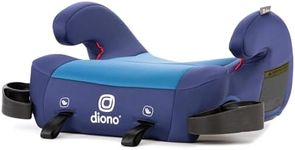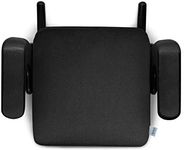Buying Guide for the Best Portable Booster Car Seat
Choosing a portable booster car seat is an important decision for families who travel often or need flexibility when transporting children. The right booster seat keeps your child safe and comfortable while making it easy for you to move the seat between vehicles or take it on trips. When shopping, focus on how the seat fits your child’s size, how easy it is to install and carry, and whether it meets safety standards. Understanding the key features will help you find a booster that matches your lifestyle and your child’s needs.Weight and Height LimitsWeight and height limits refer to the minimum and maximum size a child can be to safely use the booster seat. This is important because using a seat outside these limits can reduce its effectiveness in protecting your child. Booster seats are usually divided into ranges: some are for younger, smaller children, while others accommodate older, taller kids. Always check your child’s current weight and height and choose a seat that fits them now and allows for some growth. If your child is close to the upper or lower limit, consider how long you want to use the seat and pick accordingly.
Portability and FoldabilityPortability and foldability describe how easy it is to carry and store the booster seat. This matters if you plan to move the seat between cars, travel by plane, or need to store it in small spaces. Some boosters are lightweight and fold flat, making them easy to pack in a bag, while others are bulkier and better for occasional moves. Think about how often you’ll need to carry the seat and how much space you have, then choose a model that matches your travel habits.
Installation MethodThe installation method is how the booster seat attaches to the car. Some boosters use the vehicle’s seat belt only, while others have extra features like latch connectors for added stability. Simpler models are quicker to set up but may shift more, while those with extra attachments can feel more secure but take longer to install. Consider how often you’ll be moving the seat and how confident you feel about installing it. If you want the fastest setup, a seat-belt-only model may be best, but if you want extra security, look for one with additional attachment options.
Safety CertificationsSafety certifications show that the booster seat meets government or industry safety standards. This is crucial because it means the seat has been tested for crash protection. Look for labels or information about compliance with recognized safety standards. All seats sold by reputable retailers should meet basic requirements, but some may have extra certifications. Always check for these before buying, and avoid seats without clear safety information.
Comfort FeaturesComfort features include padding, armrests, and adjustable headrests. These make the ride more pleasant for your child, especially on longer trips. Some boosters have minimal padding to keep them light, while others offer more support. If your child will use the seat for long drives, look for extra comfort features. For short or occasional use, a simpler design may be fine.
Ease of CleaningEase of cleaning refers to how simple it is to remove and wash the seat’s cover or wipe down surfaces. Kids can be messy, so a seat with a removable, machine-washable cover can save you time and effort. If you expect spills or frequent use, prioritize easy-to-clean materials. For occasional use, this may be less important.



